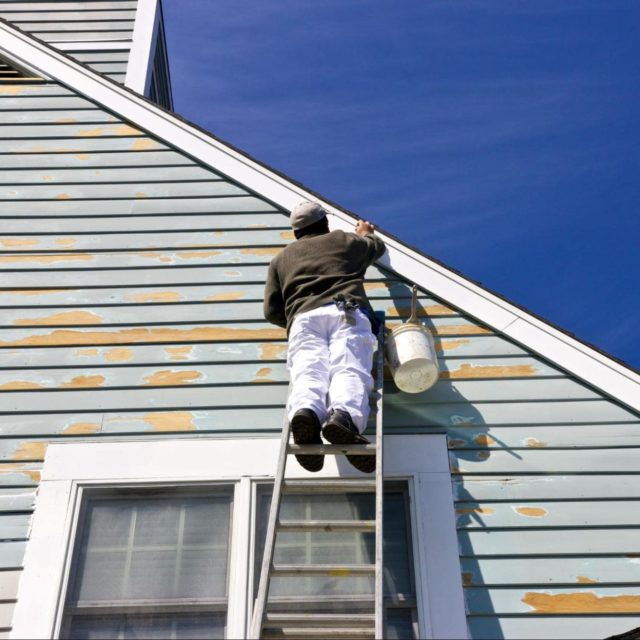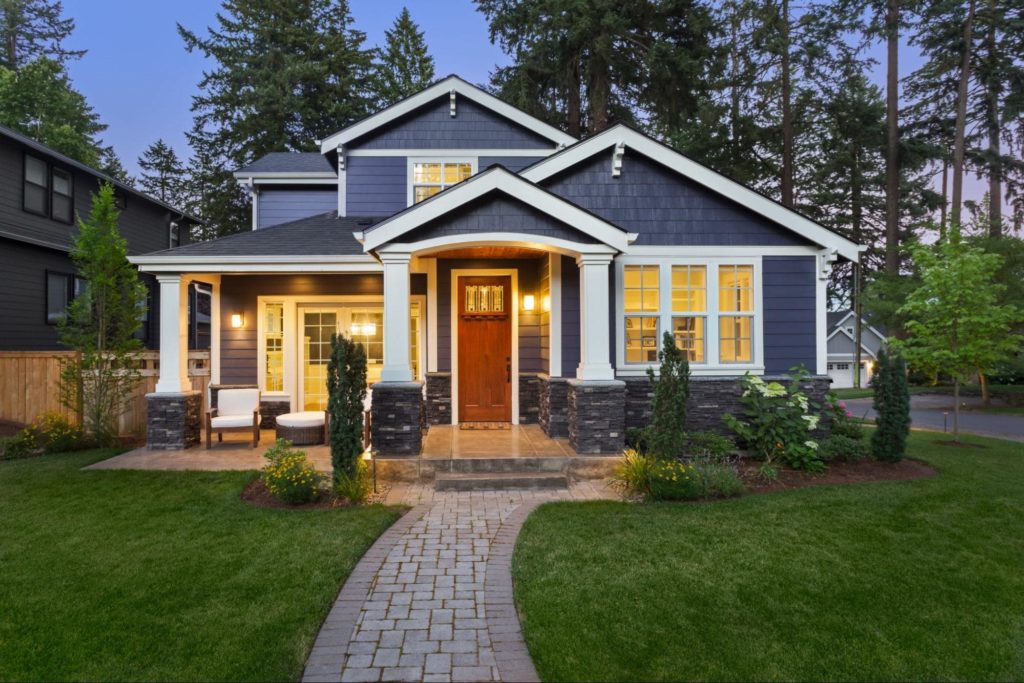Exterior House Trim Terminology: Your 101 Guide

- Written by: jlbmdev

Owning a home can feel like a part-time job. After tending to the yard and keeping the inside in order, sometimes the upkeep can feel a little exhausting. That’s why we’ve put together a comprehensive guide on exterior house trim terminology.
The goal? Help you better understand your home — or dream home’s — architectural style, so you can speak the language and become more confident at understanding the functions of its exterior components, and what you may want to upgrade to in the future.
Knowledge is power. But if you can’t communicate your ideas, you’re still stuck at square one. That’s why we’ve created this exterior house trim terminology 101 guide for you. Why?
Knowing how to communicate with contractors will help you get the most out of a repair or remodel. No homeowner wants to walk away from a project unsatisfied with the finished project because they weren’t able to communicate their thoughts and feelings.
Educating yourself on the basic components of your home can help reduce anxiety during a large project. Knowing the fundamental elements that make up your home, how they function, and why they’re there will help you better understand what to fix, what to upgrade, and what doesn’t need your immediate attention.
Everyone loves coming to a conversation prepared. Think of this section as a cheat sheet — one you can revisit as many times as you need to. We’ll start with the different components of outdoor trim before we survey the additional parts of a house’s exterior.
Siding refers to the layer of material placed on the outside or exposed area of a house. Siding comes in a variety of materials, including vinyl, wood, stone, brick, metal, aluminum, and synthetic options.
Typically made of aluminum and wood, fascia works alongside trim to create an appealing and finished look to the home’s exterior.
Another exterior component designed to divert water away from the home, flashing protects doors, windows, basements, and garages from water damage.
Foundations are put in place to keep a home stable and structurally sound.
The decorative trim of a house, frieze boards are typically placed horizontally at the top of a house’s siding, just below the roof’s edge.
The part of a roof that extends out from a house’s side is known as the eave. These overhangs are there to shield water from a home’s exterior.
Window trim typically frames the exterior side of a window from the sloped sill to lineals and header. Without the window trim, the window, walls, and floors inside a home would all sustain water damage. From PVC exterior window trim to cedar and vinyl, window trim comes in various materials and styles.
Found at the top of a door frame, exterior door trim typically resembles a window’s cap and crown molding. A multi-panel door consists of several components, including:
Typically located where the siding and roof line meet, box ends are designed to improve a home’s aesthetic quality and provide a tight seal at the siding and roof connection.
Situated at an angle on the roof, dormers enclose a home’s top floor(s) and enclose an attic space, provided there is one.

Now that we’ve covered some of the more pertinent elements of exterior trim, let’s take a look at the additional parts of a house’s exterior to help you better understand your home.
Usually constructed with aluminum and placed along the exterior perimeter of a house, gutters come in a variety of styles, though their function is always the same: collect rainwater and direct the flow of water to downspouts. Gutter guards are becoming an increasingly popular add-on to gutters as they help prevent leaves and other debris from accruing.
Downspouts attach to the end of gutters and help direct rainwater from the roof and away from your house’s foundation. Downspouts are usually constructed with an aluminum tube.
Located around the perimeter of your roof on both the eaves and the rakes, when installed properly drip edge is designed to protect the edges of roofing materials from water damage.
Used for structural stability and decorative purposes, columns are typically found at or near the front of a house. Not every home has a column, and they’re typically seen in larger homes. The three most popular styles are square, round, and interior columns.
Typically constructed from aluminum, corner posts can provide structural support to a home while preventing damage to the attached corners, but in many cases, they are used for decorative purposes. Corner posts are constructed at a 90-degree angle and placed at the corners of a home, hence the name.
Necessary for allowing smoke and other toxic gasses a way to escape when using a fireplace or a gas/ oil furnace, most people know what a chimney looks like and what it does. And while they’re still popular, more and more homes are actually being built without a chimney or fireplace.

Even as you gain a better understanding of different types of house trim, it’s still easy to mix up terms (especially when they have similar, albeit different functions). Don’t worry — that’s what this blog is for, and that’s why we’ve compiled a few popular FAQs below to help you out.
Often confused and used interchangeably, eaves and soffits are two different components of outdoor trim, though they serve similar purposes. The eave refers to the entirety of the overhanging part of a roof, whereas the soffit refers exclusively to the underside component of the eave.
While the mix-up is certainly understandable, correctly understanding some of the minutiae of exterior house trim terminology will make it easier for you should you encounter any roof repairs or replacements.
Similar to eaves and soffits, rakes and fascia are often confused with one another, though they’re technically different. While they both refer to exterior trim around a roof, rake board trim only runs diagonally across the gables of a home. On the other hand, the fascia of a house runs horizontally along the rafters, trusses, and gutters.
One of the most popular and oldest styles of trim around is solid wood trim. The most common types of wood for solid wood trim are cedar and redwood, as they’re durable, moisture and insect-resistant, and last much longer than other types of wood.
As the price of building materials has been on the rise, engineered wood has become a fast-growing alternative. Typically made from a blend of wood, glue, and resins, engineered wood comes in many forms. It typically comes in at a lower price point than solid wood. Other types of popular trim include fiber cement (another popular alternative to solid wood) and plastic.
An alternative to wood trim is PVC trim. While PVC is typically used in pipes and plumbing fixtures due to being impervious to moisture, it is also a common material used in exterior trim. It can be cut, milled, shaped, and routed just like wood trim. Unlike wood, it won’t chip, crack, bow, or rot, and it is also flame retardant.
One benefit of PVC moulding is that it is fully customizable. It can be molded in various shapes, like intricate Victorian-style trim, and can even mimic the look of wood trim. Another advantage is that PVC trim can last a lifetime since it won’t deteriorate. This makes it low maintenance for homeowners who want curb appeal without the work.
J&L offers a wide range of PVC trim options that are moisture, insect, and split resistant, as well as eco-friendly.
Take the information in this blog and do your best to internalize it as you think about the future of your home. While you shouldn’t feel like you have to be an expert in building materials and renovations (that’s what we’re here for), you’ll feel more confident and gain clearer direction when you understand some of the fundamentals.